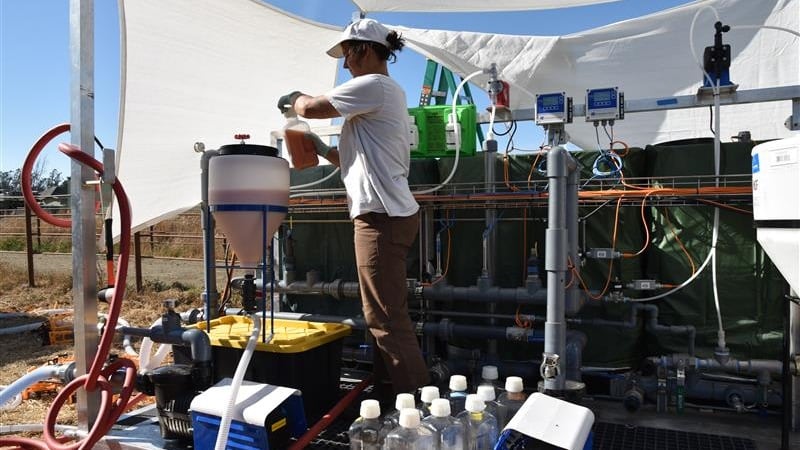Converting methane into functional organic fertiliser might be a two-in-one solution farmers need to stay ahead of fertiliser volatility while promoting more sustainable farming practices, as two Windfall Bio executives shared with AgTechNavigator.
Launched in 2022, Windfall Bio uses methane-eating microbes (MEMs) to convert the greenhouse gas into a functional organic fertiliser, called Foundation, which achieved Organic Materials Review Institute certification, as AgTechNavigator previously reported. Windfall Bio works with food producers and waste management organizations to install modular bioreactors to capture and convert methane into its organic fertiliser.
The agtech company has run pilot programs with two Whole Foods suppliers, Straus Family Creamery and Darigold. Additionally, the company is opening a pilot facility in Texas next month to attract prospective clients.
Windfall Bio is on the cusp of releasing field trial data to demonstrate the fertiliser’s effectiveness, Josh Silverman, CEO and co-founder, told AgTechNavigator.
“Farmers don’t like to hear a tech story. Farmers want low risk, good performance,” he elaborated.
With Foundation, “we are seeing better advantages, better nitrogen availability, higher growth than some of the comparables. So, there are advantages coming across, and we are trying to quantify that. There are things that farmers will pay for. They will not pay for sustainability, but they will pay for more weight of lettuce coming off the field,” he added.
The fertiliser supply chain ‘is completely upside down’
The need for new fertiliser sources comes as tariffs complicate sourcing, as demand for the crop input remains high, adding fuel to rising prices, Manoj Sahoo, CCO at Windfall Bio, told AgTechNavigator. The global fertiliser market was worth $193 billion in 2021 and is expected to reach more than $240 billion by 2030, according to Statista.
“The supply chain for fertiliser, organic as well as synthetic, is completely upside down after something called a tariff was introduced. So, unfortunately, a lot of the high-value organic fertilisers like soy hydrolyzed were imported from China [and a] little bit from Brazil. Both countries now have a 50% tariff,” Sahoo elaborated.
Amid trade volatility, “everybody wants domestic, local, [and a] guaranteed supply of fertiliser because it is a food security issue,” Silverman noted. By converting a waste stream into a product, farmers can use the product themselves and save cost or sell the fertiliser on the market, Sahoo said.
“We supply them the MEMs, which are our intellectual property, and we help them optimize the production systems, so the unit is owned by them. And some places we find that there may be a local market to sell the fertiliser because they may be in a farming community where there may be a lot of farmers around, where they can sell locally, and we give them the liberty to market that fertiliser themselves under our brand,” Sahoo added.
Windfall Bio readies demo plant
Windfall Bio is demonstrating the potential of its technology through a demonstration plant in Houston. The facility will launch within the next month and will serve as a “customer engagement tool,” so potential clients can see the technology in action, Silverman noted.
“This demo plant signals a fundamental shift away from capital-intensive methane combustion systems toward a standardized, modular, low-cost methane bioconversion platform. A critical step in commercializing Windfall Bio’s multi-product, methane-to-value solution, the demo plant will showcase the versatility of our technology to create value from a diverse range of methane sources and provide customers a hands-on experience for how the solution can be deployed on their own sites,” Silverman said in a press release.





